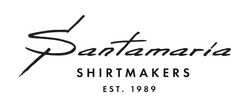Poplin
Poplin is a tightly woven fabric with a very simple over-under weave and very little sheen, which ensures a nice professional finish. Poplins are great for guys who are looking for minimal texture in their fabrics. They are generally a thinner, lighter fabric. In particular, white poplin fabrics can be slightly transparent. Poplins generally wear the smoothest out of all weaves owing to their lack of texture.

















